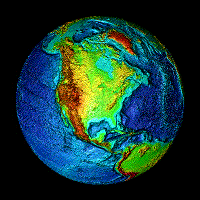 
Science Suppression by NASA |
Excerpt from the book Maverick’s Earth and Universe by J. Marvin Herndon (click here)
To demonstrate the feasibility of nuclear fission reactors for the giant planets, I did as Kuroda had done and applied Fermi’s nuclear reactor theory. I described the background, basis, and results in a scientific paper entitled "Nuclear Fission Reactors as Energy Sources for the Giant Outer Planets", and in 1991 submitted it to the German journal Naturwissenschaften [43]. This was a fundamentally new idea, an idea that planetary scientists had overlooked. It was the beginning of a whole new logical progression of understanding, like discovering a new path through the wilderness. As a consequence much, much more understanding would follow about the nature of planets and about the nature of human institutions.
The National Aeronautics and Space Administration (NASA) formally and openly solicits research proposals from members of the scientific community, as NASA itself conducts few scientific investigations. On the surface, NASA’s research proposal system might seem to be a sound way of bringing innovative new concepts into its space exploration program. So, when my Naturwissenschaften paper was accepted for publication, I submitted a research proposal to NASA’s Planetary Geophysics Program. Paul K. Kuroda, who had predicted the natural reactors later discovered at Oklo, accepted my invitation to join in as a co-investigator. Kuroda, however, insisted that his efforts be pro bono as he "did not need the money".
The Universities Space Research Association, an association of major institutional recipients of NASA funding, operates the Lunar and Planetary Institute, which, at the time I submitted the proposal, operated the Lunar and Planetary Geoscience Review Panel (LPGRP). The LPGRP served NASA by soliciting secret reviews of submitted proposals, then in secret session reviewing the proposals, and ranking those so to make it easy for a NASA official to decide which to fund. The LPGRP, composed a group of principal investigators of NASA grants funded either through NASA’s Planetary Geophysics Program or Planetary Geology Program, conducted the secret ranking of proposals submitted to one or the other of those same two NASA programs. In other words, my proposal was competing for the same limited pool of funds as proposals from the very institutions whose personnel served on the LPGRP. At the time, the chairman of the LPGRP was associated with NASA’s Jet Propulsion Laboratory, which is operated by the California Institute of Technology (Caltech), and which consumed more than 40% of the budget of the Planetary Geophysics Program.
Needless to say my proposal was not funded. Normally, the LPGRP’s ranking of proposals is kept secret, but through extraordinary efforts I learned from the U. S. Congress’ General Accounting Office (since 2004 called Government Accountability Office) that on technical merit the LPGRP ranked my proposal lowest of the 120 proposals submitted to NASA’s Planetary Geophysics Program. One might seriously question the integrity of that ranking, as I later independently performed all that I had proposed and much more, and the concept of planetary nuclear fission reactors has received quite thorough vetting in the international scientific community. So, what can those institutions who receive funding from NASA do? Admit incompetence or wrongdoing? No, of course not. Their options are to:
1.) Pretend that the concept of planetary nuclear reactors never existed;
2.) Attempt to suppress scientific papers relating thereto;
3.) Make pejorative remarks to the press; and,
4.) Intimidate the scientific community with the implied threat of career-damaging consequences if anyone acknowledges the concept.
In other words, mislead the scientific community and the general public. Meet the science-barbarians.
Return to Home Page NuclearPlanet.com
Reference 43: Herndon, J. M., Nuclear fission reactors as energy sources for the giant outer planets. Naturwissenschaften, 1992, 79, 7-14.